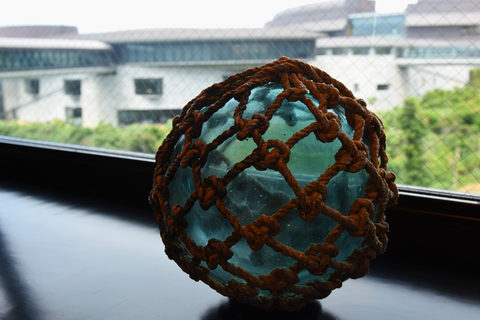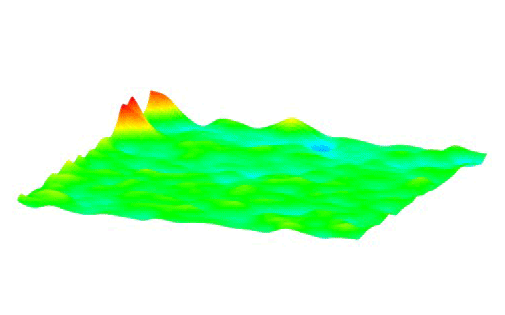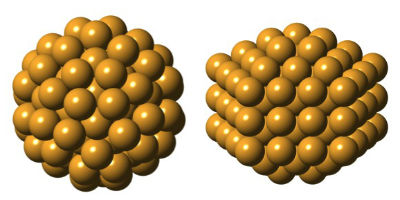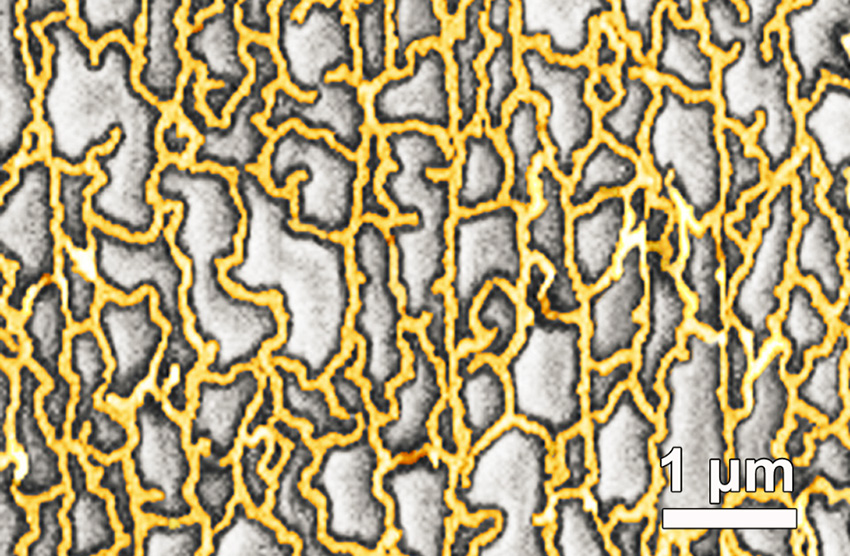Stephen Melendez’s June 11, 2016 story about biohackers/bodyhackers/grinders for Fast Company sports a striking image in the banner, an x-ray of a pair hands featuring some mysterious additions to the webbing between thumbs and forefingers (Note: Links have been removed),
Tim Shank can guarantee he’ll never leave home without his keys. Why? His house keys are located inside his body.
Shank, the president of the Minneapolis futurist group TwinCities+, has a chip installed in his hand that can communicate electronically with his front door and tell it to unlock itself. His wife has one, too.
…
In fact, Shank has several chips in his hand, including a near field communication (NFC) chip like the ones used in Apple Pay and similar systems, which stores a virtual business card with contact information for TwinCities+. “[For] people with Android phones, I can just tap their phone with my hand, right over the chip, and it will send that information to their phone,” he says. In the past, he’s also used a chip to store a bitcoin wallet.
Shank is one of a growing number of “biohackers” who implant hardware ranging from microchips to magnets inside their bodies.
Certainly the practice seems considerably more developed since the first time it was mentioned here in a May 27, 2010 posting about a researcher who’d implanted a chip into his body which he then contaminated with a computer virus. In the comments, you’ll find Amal Grafstraa who’s mentioned in the Melendez article at some length, from the Melendez article (Note: Links have been removed),
Some biohackers use their implants in experimental art projects. Others who have disabilities or medical conditions use them to improve their quality of life, while still others use the chips to extend the limits of human perception. …
Experts sometimes caution that the long-term health risks of the practice are still unknown. But many biohackers claim that, if done right, implants can be no more dangerous than getting a piercing or tattoo. In fact, professional body piercers are frequently the ones tasked with installing these implants, given that they possess the training and sterilization equipment necessary to break people’s skin safely.
“When you talk about things like risk, things like putting it in your body, the reality is the risk of having one of these installed is extremely low—it’s even lower than an ear piercing,” claims Amal Graafstra, the founder of Dangerous Things, a biohacking supply company.
Graafstra, who is also the author of the book RFID Toys, says he first had an RFID chip installed in his hand in 2005, which allowed him to unlock doors without a key. When the maker movement took off a few years later, and as more hackers began to explore what they could put inside their bodies, he founded Dangerous Things with the aim of ensuring these procedures were done safely.
“I decided maybe it’s time to wrap a business model around this and make sure that the things people are trying to put in their bodies are safe,” he says. The company works with a network of trained body piercers and offers online manuals and videos for piercers looking to get up to speed on the biohacking movement.
At present, these chips are capable of verifying users’ identities and opening doors. And according to Graafstra, a next-generation chip will have enough on-board cryptographic power to potentially work with credit card terminals securely.
“The technology is there—we can definitely talk to payment terminals with it—but we don’t have the agreements in place with banks [and companies like] MasterCard to make that happen,” he says.
Paying for goods with an implantable chip might sound unusual for consumers and risky for banks, but Graafstra thinks the practice will one day become commonplace. He points to a survey released by Visa last year that found that 25% of Australians are “at least slightly interested” in paying for purchases through a chip implanted in their bodies.
Melendez’s article is fascinating and well worth reading in its entirety. It’s not all keys and commerce as this next and last excerpt shows,
Other implantable technology has more of an aesthetic focus: Pittsburgh biohacking company Grindhouse Wetware offers a below-the-skin, star-shaped array of LED lights called Northstar. While the product was inspired by the on-board lamps of a device called Circadia that Grindhouse founder Tim Cannon implanted to send his body temperature to a smartphone, the commercially available Northstar features only the lights and is designed to resemble natural bioluminescence.
“This particular device is mainly aesthetic,” says Grindhouse spokesman Ryan O’Shea. “It can backlight tattoos or be used in any kind of interpretive dance, or artists can use it in various ways.”
The lights activate in the presence of a magnetic field—one that is often provided by magnets already implanted in the same user’s fingertips. Which brings up another increasingly common piece of bio-hardware: magnetic finger implants. ….
There are other objects that can be implanted in bodies. In one case, an artist, Wafaa Bilal had a camera implanted into the back of his head for a 3rd eye. I mentioned the Iraqi artist in my April 13, 2011 posting titled: Blood, memristors, cyborgs plus brain-controlled computers, prosthetics, and art (scroll down about 75% of the way). Bilal was unable to find a doctor who would perform the procedure so he went to a body-piercing studio. Unfortunately, the posting chronicles his infection and subsequent removal of the camera (h/t Feb. 11, 2011 BBC [British Broadcasting Corporation] news online article).
Observations
It’s been a while since I’ve written about bodyhacking and I’d almost forgotten about the practice relegating it to the category of “one of those trendy ideas that get left behind as interest shifts.” My own interest had shifted more firmly to neuroprosthetics (the integration of prostheses into the nervous system).
I had coined a tag for bodyhacking and neuroprostheses: machine/flesh which covers both those topics and more (e.g. cyborgs) as we continue to integrate machines into our bodies.
Final note
I was reminded of Wafaa Bilal recently when checking out a local arts magazine, Preview: the gallery guide, June/July/August 2016 issue. His work (the 168:01show) is being shown in Calgary, Alberta, Canada at the Esker Foundation from May 27 to August 28, 2016,
168:01 is a major solo exhibition of new and recent work by Iraqi-born, New York-based artist Wafaa Bilal, renowned for his online performances and technologically driven encounters that speak to the impact of international politics on individual lives.
In 168:01, Bilal takes the Bayt al-Hikma, or House of Wisdom, as a starting point for a sculptural installation of a library. The Bayt al-Hikma was a major academic center during the Islamic Golden Age where Muslim, Jewish, and Christian scholars studied the humanities and science. By the middle of the Ninth Century, the House of Wisdom had accumulated the largest library in the world. Four centuries later, a Mongol siege laid waste to all the libraries of Baghdad along with the House of Wisdom. According to some accounts, the library was thrown into the Tigris River to create a bridge of books for the Mongol army to cross. The pages bled ink into the river for seven days – or 168 hours, after which the books were drained of knowledge. Today, the Bayt al-Hikma represents one of the most well-known examples of historic cultural loss as a casualty of wartime.
For this exhibition, Bilal has constructed a makeshift library filled with empty white books. The white books symbolize the priceless cultural heritage destroyed at Bayt al-Hikma as well as the libraries, archives, and museums whose systematic decimation by occupying forces continues to ravage his homeland. Throughout the duration of the exhibition, the white books will slowly be replaced with visitor donations from a wishlist compiled by The College of Fine Arts at the University of Baghdad, whose library was looted and destroyed in 2003. At the end of each week a volunteer unpacks the accumulated shipments, catalogues each new book by hand, and places the books on the shelves. At the end of the exhibition, all the donated books will be sent to the University of Baghdad to help rebuild their library. This exchange symbolizes the power of individuals to rectify violence inflicted on cultural spaces that are meant to preserve and store knowledge for future generations.
In conjunction with the library, Bilal presents a powerful suite of photographs titled The Ashes Series that brings the viewer closer to images of violence and war in the Middle East. In an effort to foster empathy and humanize the onslaught of violent images that inundate Western media during wartime, Bilal has reconstructed journalistic images of the destruction caused by the Iraq War. He writes, “Reconstructing the destructed spaces is a way to exist in them, to share them with an audience, and to provide a layer of distance, as the original photographs are too violent and run the risk of alienating the viewer. It represents an attempt to make sense of the destruction and to preserve the moment of serenity after the dust has settled, to give the ephemeral moment extended life in a mix of beauty and violence.” In the photograph Al-Mutanabbi Street from The Ashes Series, the viewer encounters dilapidated historic and modern buildings on a street covered with layers upon layers of rubble and fragments of torn books. Bilal’s images emanate a slowness that deepens engagement between the viewer and the image, thereby inviting them to share the burden of obliterated societies and reimagine a world built on the values of peace and hope.
The House of Wisdom has been mentioned here a few times perhaps most comprehensively and in the context of the then recent opening of the King Abdullah University for Science and Technology (KAUST; located in Saudi Arabia) in this Sept. 24, 2009 posting (scroll down about 45% of the way).
Anyone interested in hacking their own body?
I expect you can find out more Amal Grafstraa’s website.






